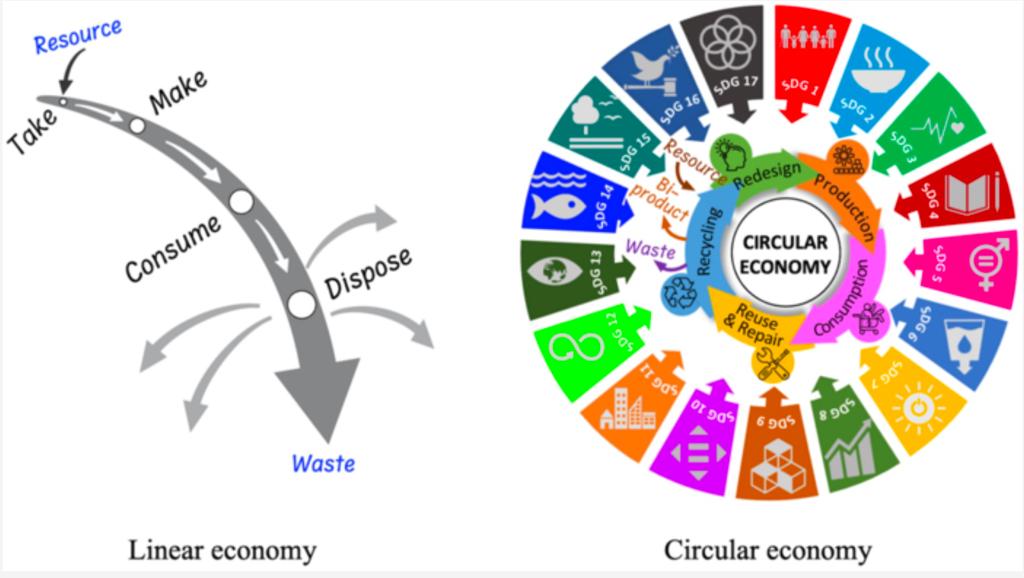Embracing Circularity: Paving the Way to a Sustainable Future

The concept of circularity has been gaining more and more attention in recent years as our society begins to recognize the urgent need to change our current linear model of consumption and production. A circular economy aims to create a regenerative system where resources are used efficiently, waste is minimized, and products are designed to last longer, be repaired, and eventually recycled.
The dominant model for centuries, the linear economy, follows a “take-make-dispose” approach. Resources are extracted, materials are transformed into products, and once they are no longer helpful, they are discarded as waste. This linear model not only depletes finite resources at an alarming rate but also leads to environmental degradation and waste accumulation, contributing significantly to climate change, pollution, and resource scarcity.
In contrast, the circular economy model proposes a more sustainable way of doing things. It is based on designing out waste and pollution, thereby juggling the same materials and products, keeping them in use much longer, and regenerating natural systems. By embracing circularity, we can move away from the “throwaway culture” and create a more resilient, sustainable, and equitable future.
One of the critical aspects of circularity is resource efficiency. This involves shifting from a mindset of endless extraction and consumption to responsible use and maximizing resource value. We can extend their lifespan and minimize the need for new resource extraction by designing with less, recycling, and reusing materials. Additionally, circularity encourages using renewable and sustainable resources, which can be replenished and do not harm the environment.
Product design also plays a crucial role in circularity. Products should be designed with longevity, considering durability, reparability, and recyclability. This means moving away from cheaply made, disposable items to those easily repaired or upgraded. Moreover, designing products to be modular allows for the replacement of specific components instead of the entire creation, thereby reducing waste.
Furthermore, circularity encourages the sharing economy and promotes access over ownership. Collaborative consumption, such as car-sharing or tool libraries, reduces the demand for new products and maximizes utilizing existing resources. By sharing assets, we can optimize their use and avoid unnecessary duplication.
Circularity also encompasses waste management strategies. It promotes recycling to close the loop and reintroduce materials into the production process. This reduces the reliance on virgin materials and lessens the environmental impact of new extraction. Composting organic waste can help regenerate soil and contribute to a healthier ecosystem.
Transitioning to a circular economy may seem daunting. Still, many businesses and organizations are already making incredible strides in this direction. From fashion brands embracing rental and resale services to companies adopting product-as-a-service models, various innovative approaches are being implemented.
Governments also have a vital role to play in advancing circularity. Legislation can incentivize sustainable practices, promote eco-design principles, and support the development of circular businesses. Moreover, collaborations between stakeholders, including corporations, governments, academia, and civil society, are crucial for driving systemic change.
Circularity offers a comprehensive and sustainable solution to the problems posed by our current linear model of consumption and production. By embracing the principles of circular economy, we can create a regenerative system that minimizes waste and resource depletion, fosters innovation, stimulates economic growth, and enhances overall well-being. It is up to each one of us to advocate for and actively participate in the transition toward a circular future.

